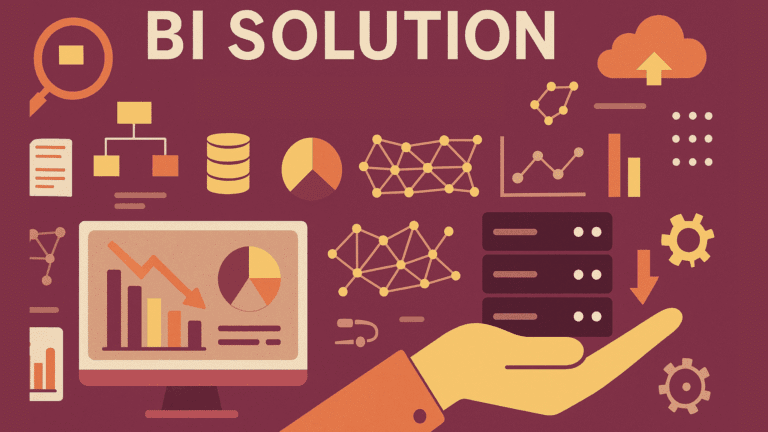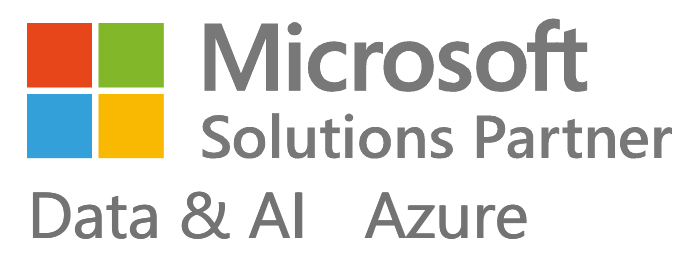

BI Solution | Guaranteeing Failure
Introduction
Business Intelligence solutions are the logical extensions of ERP projects. They give you the tools to make sense out of the mountains of data that an ERP system will generate.
When they hear the word ‘ERP’, I have seen senior managers hold their head between their hands and say, “Oh… no, not again!” All that I tell them is that the BI solution will finally deliver to them what they thought ERP was supposed to deliver, i.e., information to run their business.
In my practice, I have seen BI solutions succeed wildly and BI solutions fail miserably. Since failure seems to be so popular, I thought do-it-yourself guidelines on how to fail would be useful to newcomers in the world of BI.
So here goes …
Failure Guidelines
With great diligence I have compiled my failure guidelines. Any of the following guidelines can lead to a good failure, but if you want a great failure, try multiple or all of them:
- I don’t have time for BI
- BI is an IT responsibility
- Insist on maintaining a parallel system
- Don’t learn the BI tool yourself
- Assume that your requirements have been understood
- Don’t check on the BI Project too often
- Plan a big bang release of Enterprise BI
- Make a complicated BI Interface
- Make the BI-developer deliver fast… like in yesterday
- Don’t spend too much on BI
- If it’s BI, it must be right!
- Keep BI only for the Elite
I shall detail all these failure guideline steps in the following paragraphs. However, in case you wish to avoid these failures, I have also given antidotes in each case.
1. I don’t have time for BI
You are the CEO or a very senior executive of your company. You have so many targets to meet. You are working 48 hours a day and still not able to fulfill your commitments. You don’t have the time or energy to take on another commitment. You are just too busy to deal with BI.
Antidote:
Buddy, get your priorities right. You remind me of an executive who was so busy that when he had severe pain in his stomach, he sent his assistant to the doctor. A well-integrated BI system consisting of KPI Dashboards, Analytical and Operational reports can give you key information at your fingertips. A lot of your time, which is lost in searching for relevant information, can be saved. I like to compare such a BI system to our central nervous system. It sends signals to our brain, and we act on such signals. The BI system also sends signals to the decision maker by which he is able to take corrective action. It is just too important to delegate. You, as a decision maker, must identify what signals you want and at what frequency.
2. Make BI an IT Responsibility
Instead of the decision-maker getting involved in the BI project, it is best to leave the project to the IT department. That way, in case it fails, it would be an IT failure.
Antidote:
Buddy, take the bull by its horns. The lack of a good BI system affects you much more than you think. The BI project contains two distinct elements. One is the BI software, and the second is the BI content. The best people to select the software will certainly be the IT department. They will check and compare all the techie stuff like scalability, response time, extract-transform-load services, etc. But what is the content that you want the BI software to deliver? That is your responsibility. Remember that your IT department will not be able to visualize all your pain points and wish list. This is something which you just cannot delegate. I have seen the greatest successes when people with line responsibility drive the delivery of BI solutions.
3. Insist on maintaining a parallel system
Always maintain your own private MIS report. Do not depend too much on these new fangled BI reports. You have to be safe and protect yourselves. So even if the BI reports are getting generated, always ask your executive assistant to continue generating your own reports on a spreadsheet.
Antidote:
Buddy, there has to be only one version of the truth. If you maintain a parallel set of data for MIS purposes, the BI reports will never get their due importance. In my practice I came across a case where commercial departments and branch offices were maintaining their own records of Accounts Receivables. These never matched with that shown by the centralized reporting system. There were regular stand-offs between the finance department and the AR department about whose records were more accurate. However the MD had enough of these squabbles. He issued a diktat – there would be only report and that would be only the BI report. If there was any error, then the report would be rectified, but there would be no two version of the report being maintained. Following this diktat, the BI reports started getting utilized regularly, and the tremendous flexibility of these reports started getting appreciated. Today the entire company uses these BI reports regularly and all decisions are taken on the basis of these reports.
4. Don’t learn the BI tool yourself
You are very senior and don’t need this new BI technology (too old to learn the new technology). What’s the point in learning these new things, when your executive assistant can make a summary report for you?
Antidote:
Buddy, “…In a turbulent, constantly changing environment, the most important survival tool is LEARNING — both individual and organisational.” BI is serious stuff, and your decision-making capability depends on this. It is something you better not delegate. You may have a great executive assistant, but remember that you are the owner of the data. Your capability to deep dive into the data and understand the various meanings and trends in the data is far superior to that of your EA. In the earlier days of email, I have seen senior executives who did not answer their own emails. Their secretary would come to their PC and answer the emails. They were too scared of using the new technology. A whole generation of such people scared of technology got washed away when the tsunami of email, ERP, and such other technologies came to the corporate world. BI is vital technology, and it will give you great insights into your data and make your decisions much more informed. And believe me; it’s easy to use once you overcome your phobia. I am sure that if a great new movie comes to town, you would surely go to experience that movie instead of sending your EA to see the movie and give you a summary !
5. Assume that your requirements have been understood
You are sure that your verbal communication of BI requirements has been understood by the BI developer.
Antidote:
Buddy, the surest path to disaster is to assume that the bi-developer has correctly understood at the first time what the user stated as his requirement. There is generally a huge gap between what you said and what is understood by the developer. The only way to bridge this communication gap is to insist on a prototype. For example, when you are building your home, wont you sit with your architect and go through each and every detail with him? Only this will ensure that when the house is constructed, it is what you imagined it to be. The same applies to BI content also. The following popular diagram shows what really happens if you don’t insist on a prototype :
6. Don’t check on the BI Project too often
You give the bi-developer the purchase order, and agree to meet next, after three months, with the finished results.
Antidote:
Buddy, I am sure you have heard of the Old Russian proverb ‘Trust but verify!’. The BI project needs constant monitoring to ensure that your vision is being translated into reality in the correct manner. You must insist on the BI-developer to give you a detailed list of milestones for the entire project. You must review each and every milestone and ensure that the project is going in the right direction.
7. Plan a big bang release of Enterprise BI
You decide to take your Board of Directors by surprise, by releasing the entire new BI in one big bang.
Antidote:
Buddy, big bang works only in the Universe. How much ever you detail out the reports, there are still a lot of iterations which you would need before the report is ready to be rolled out to the rest of the company. Instead of a big bang approach; phase out the entire project into smaller modules. Check and release the reports one at a time. Get the user feedback and make appropriate changes. It is better to have one successful report, than 20 failed ones.
8. Make a complicated BI Interface
You have approved of a super-duper BI report with all the bells and whistles. In one single screen you want to see all the areas of your business and all the key numbers and graphs.
Antidote:
Buddy, follow the KISS principle – keep it simple and stupid. The above complex scenario is very much possible with today’s technology. Your BI reports will look like the cockpit of a Jumbo Jet, and would be hardly usable. Remember the principle of ‘span of control’. The human mind is not able to easily assimilate more than 5 to 7 items at one go. Design your entire BI solution around this principle. Keep the BI report extremely simple to us. Flashiness, blinking lights, psychedelic colors etc. look good only for the first time. What users want are simple, easily understood and yet actionable reports. Use drill downs if you wish to go into greater level of reports.
9. Make the BI-developer deliver fast .. like in yesterday
You put tremendous pressure on the bi-developer. You want results very quickly.
Antidote:
Buddy, haste makes waste. Give your BI developer sufficient time. If you push him too hard, he may take shortcuts that may boomerang on your later on. After all your company has run all these years without this report; a little relaxed delivery date will not harm you. This does not mean the bi-developer should take his own sweet time, but you should not work on an impossible delivery schedule.
10. Don’t spend too much on BI
You are under tremendous pressure to reduce costs. You can’t afford to spend too much on BI, otherwise you would get hauled up by your management.
Antidote:
Buddy, you are being penny wise and pound foolish. It is BI which is going to help you reduce your costs. BI is not supposed to be just a fancy reporting solution. It is supposed to help you take good decisions. A good BI solution can for example help you reduce your investment in inventories, reduce your overdue account receivables etc.. Of course the BI solution by itself will not reduce your costs. It is your action based on the information which the BI solution gives which will reduce your costs. In my practice I have a client whose account I got after months of follow up. They had implemented a famous ERP and they thought that with that all their problems would get solved. The problems however did not go away. It was very difficult convincing the client to put more money in another software solution. However after persistent follow up I managed to get a small order, more like a pilot solution. After getting the order I told my client ‘Sir you will be very happy with the results. Our BI solution will be like salt in your food’. We delivered the solution and the client was pleased with the interface and the actionable information which it provided. And he took the desired action ! In a few months time the investment in finished goods inventory reduced to a third of what it was before the solution was implemented. The cost of the BI solution got recovered in just 15 days ! Recently the client called me once again. He said ‘Sanjay, I want to buy more salt !’.
11. If it’s BI, it must be right !
You have appointed the most prominent bi-developers and have spent lakhs on the solution. The results must be right.
Antidote:
Buddy, the proof of the pudding is in the eating. Do what the housewife does every day. She tastes the food before putting it on the table. Just because you have spent millions and have contracted the best people to do the job, it does not automatically mean that the results would be right! “Information must conform to the three “A’s” to be useful: it must be Accurate, Accessible, and Actionable.” The arithmetic and logical accuracy of the reports must be checked. And this is not just during the development phase, but each time the report is generated. If it is possible to have an independent check, do it. For example the total of a BI report on Accounts Receivable, should be checked against the Accounts Receivable balance in the Trial balance, etc. As a matter of good practice it would be wise to make one person responsible for checking all the controls, before the reports are released for consumption. The BI report should be easily accessible to all concerned with their relevant security settings. Put it on a portal or email it to them, or use whatever means to make it available when they want it. And finally, the report should be actionable. If the report shows millions of permutations and combinations of data and the user has to search for actionable information, it would be like searching a needle in a haystack. Design your reports to be actionable.
12.Keep BI only for the Elite
You have now got the information on your fingertips. Use it to catch your managers napping.
Antidote:
Buddy, the BI solution is to achieve corporate objectives, and not to catch your managers on the wrong foot. “In a rapidly changing environment, information has an ever shortening expiry date; and, like water, unless it flows (is shared) it gets stagnant and is useless.” Spread the BI reports to all concerned people. Let them identify and take actions. “Without information, people cannot take responsibility and with information they cannot avoid it!”.
Conclusion:
The fact that you have read this article till here means that either you are planning a BI solution, or you have experienced the failures which I have mentioned. Great luck, either ways!

About the author


